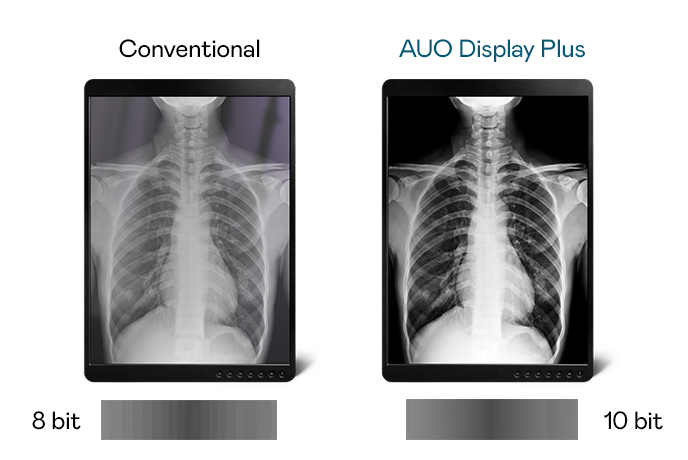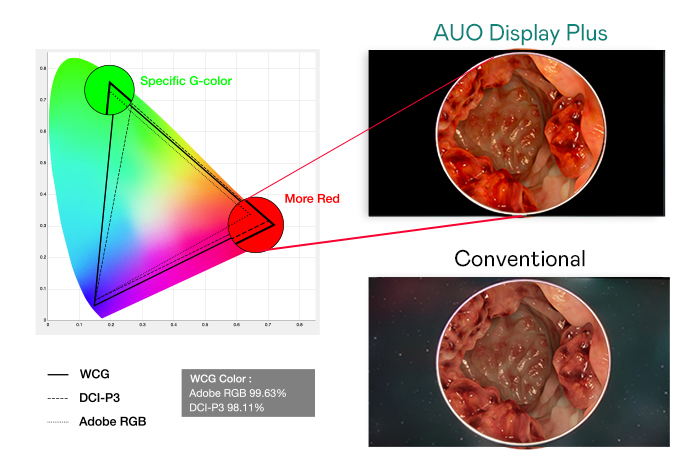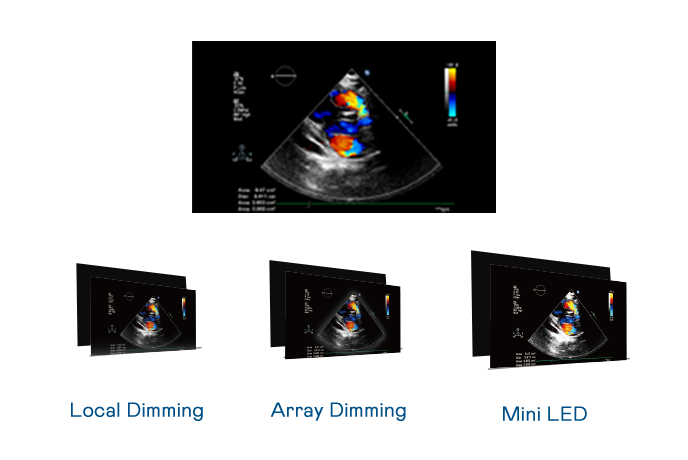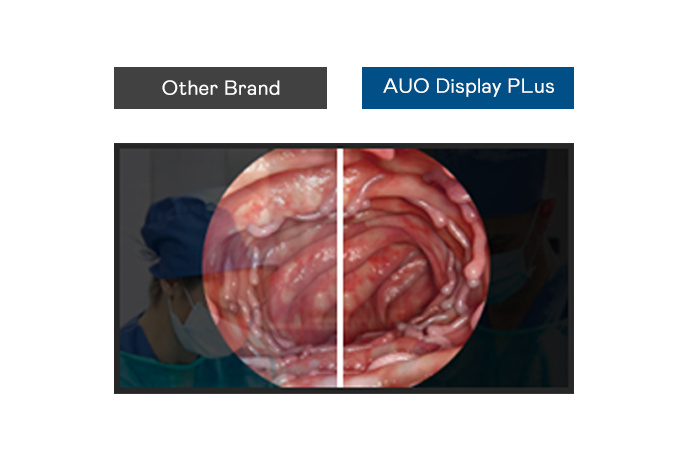-

High-Precision, High-Quality Medical Images
- Advanced Hyper-Viewing Angle (AHVA) black technology provides a wide viewing angle, ultra-high 2000:1 contrast, and low color deviation. This technology produces deeper blacks, enhancing the performance of dark detail and thereby improving the overall quality of the image. It achieve perfect dark state performance.
- The low-scattering liquid crystals used in medical display panels reduce light leakage caused by liquid scattering in the dark state.
- Smooth and precise high-resolution gray-scale screen performance complies with DICOM gray-scale standards.
- By utilizing high-end 10-bit display driver ICs, True 10-bit panels can display over one billion colors, providing better image detail and smoothness without the flicker and jitter problems of 8-bit solutions with frame rate control.
- In dark environments, it can clearly distinguish the edges of tissues, accurately express deep gray tones, and reproduce true colors. It can be applied to ultrasound, surgical imaging and radiographic imaging diagnosis.
-

Deep Red Technology
- Phosphors with high color rendering index and color filters enable 100% Adobe and 98% DCI-P3 color gamut while having high color stability and a lifespan of up to 50,000 hours.
- Our exclusive Deep Red display technology optimizes the color gamut, contrast, number of backlight partitions, and algorithms for reds to better represent tissue and blood with changes in color depth much closer to real-life colors and details. It allows doctors to clearly distinguish the subtle differences in human tissues and blood levels during operations and make more precise judgments.
-

MiniLED Technology
- The performance and detail of extremely bright to dark color volumes have been greatly expanded, creating brilliant and detailed that closely resemble real medical images. This technology utilizes an exclusive dynamic ratio and light modulation to achieve HDR 1000 extreme brightness with enhanced true blacks.
- As the backlighting unit of AmLED, mini LEDs achieve extremely refined matrix local dimming and increase an image's dynamic contrast range. It can reduce power consumption.
- Mini LEDs utilize an inorganic light source, a stable material, and have several times the luminous brightness of OLEDs without affecting their component life cycle or causing image burn-in, combining stability, reliability, and durability.
-

Optical Bonding Technology
- In special environments like operating rooms, optical bonding technology can significantly reduce reflections on the display, improve color accuracy, and enhance overall visibility. This effectively improves the visual experience for medical personnel and ensures operational safety.
- It prevents moisture from entering the interior of the display, avoiding condensation caused by temperature changes, thus maintaining the clarity and stability of the display while enhancing its durability. Our exceptional optical bonding technology is also applied to large-sized displays, providing high-quality and diverse medical display products.
